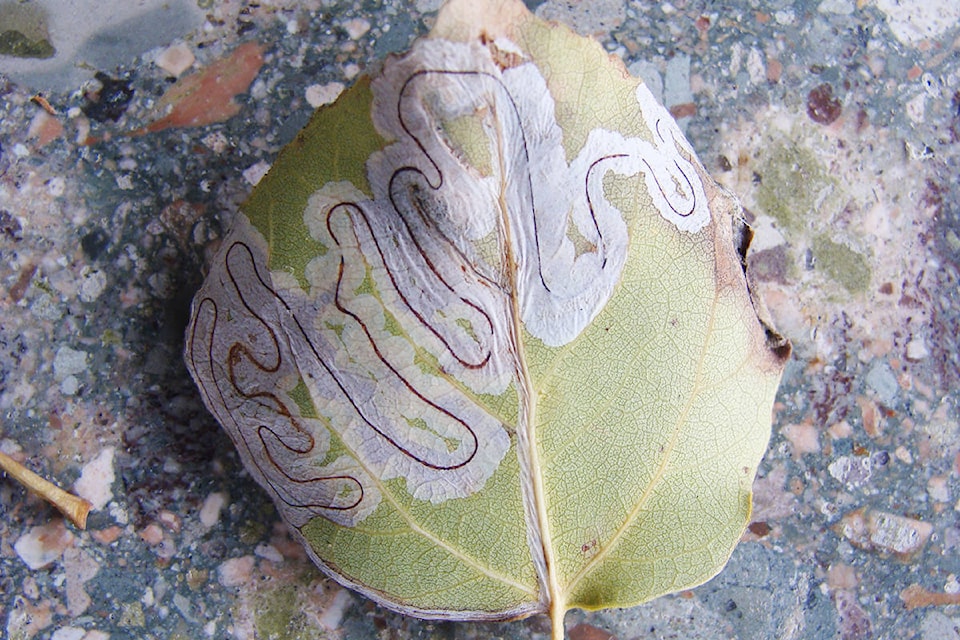Anyone who has been in an aspen forest can relate to the name Trembling Aspen when there is a slight breeze which creates one of the most unique and unforgettable forest sounds.
The intense white bark may be confused with birch but closer examination shows the bark is smooth and not flaky like birch. First nations people used many parts of the plant as an emergency food source, diaper material, medicinal purposes, fuel and to a limited extent canoe making material.
It has always be recognized as an important part of biological diversity at the landscape level by providing a habitat for a wide variety of plants and animals. With the recent large wildfires it has also been seen as playing an important part in the overall wildfire prevention and control because of its use as a natural fire break relative to the coniferous forests with a heavy fuel load.
READ MORE: Infrastructure investment needed to support remote forest industries
I did witness an Aspen stand completely consumed by fire during a very dry year in the Aspen Parkland in Alberta in the late 1960s.
In some ways aspen more closely resembles certain grass species rather than a tree in that an aspen forest can actually be one tree with many stems like quack grass which produces from rhizomes (underground stems).
From an industrial viewpoint, aspen was once considered a weed species but around 1975 with the introduction of wafer-board, oriented strand board, wood panels and pulp the use of aspen increased many fold. The increased utilization caused concern that the aspen cut could exceed the growth rate in some areas. I have milled aspen with limited success until I gained experience in the drying, sanding and positive properties of the wood. While the strength properties are relatively low, bending strength and stiffness compare favourably to the soft woods. It also has good qualities for making wood based food utensils like bowls and chop sticks.
While a wide variety of animals use aspen leaves and young stems, some insects like the Aspen Leaf Miner use them exclusively.
The infestation starts with the female moth laying an egg near the leaf stem and then the flattened larva feeds on either the upper or lower layer of the leaf leaving the central photosynthetic layer intact.
Because the middle layer is still intact there is still some photosynthesis taking place on leaves that appear to have a heavy attack.
As the larva moves through the leaf surface it creates the unique feeding lines which gives the tiny moth its name. From a distance the tree appears grey rather than the usual vibrant green.
READ MORE: 2018 could be record year for Douglas Fir seed production
As the summer progressed this year, I noticed a heavy wide spread attack throughout the region and assumed this might indicate a pending mortality of the aspen.
Upon a review of relevant literature it became apparent that the infestations are cyclical producing high numbers of infected trees with ideal weather conditions. While the infestations can cause a reduced growth rate and increased susceptibility to other diseases there do not appear to be any long term mortality concerns. We can expect to enjoy these important forests for many years to come along with the interesting array of associated plants and animals.
Jim Hilton is a professional agrologist and forester who has lived and worked in the Cariboo Chilcotin for the past 40 years. Now retired, Hilton still volunteers his skills with local community forests organizations.
Do you have a comment about this story? email:
editor@wltribune.com
Like us on Facebook and follow us on Twitter.
